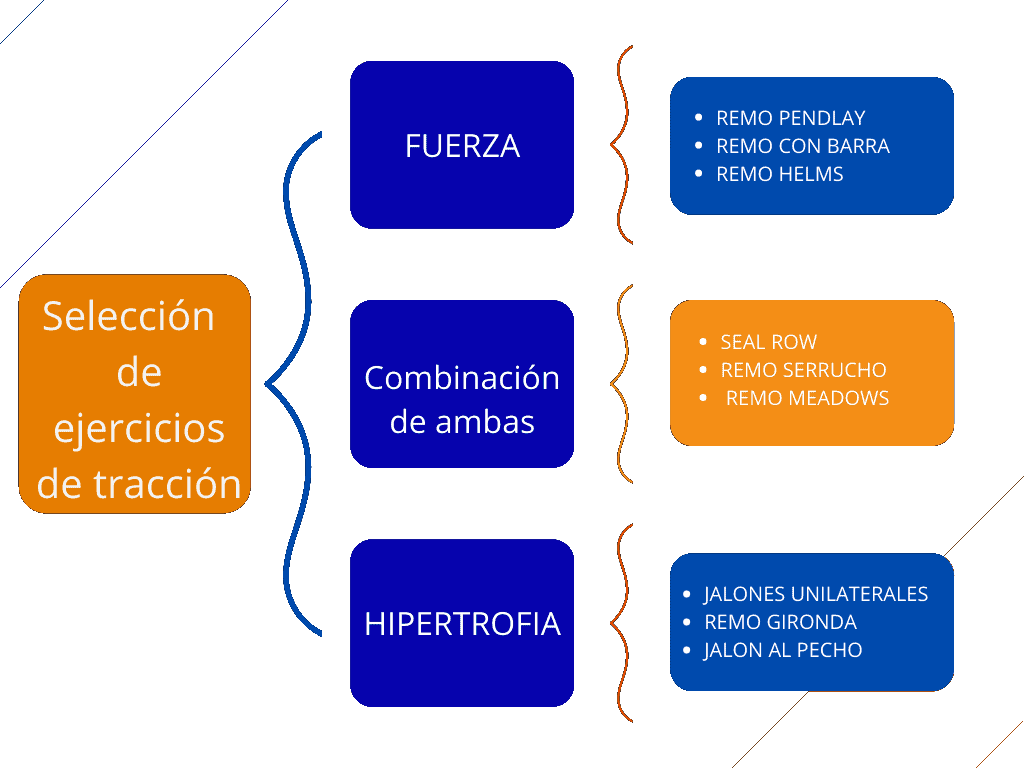When planning our workouts aimed at hypertrophying the back, it is necessary to think about training first through basic motor patterns (1, 2).
It is very common to have doubts when selecting the correct exercises or those that best adapt to each particular context. Although this will depend on multiple variables such as the trainee’s level, adherence, and goals, there are a series of biomechanical and programming factors that will greatly facilitate the correct selection and order of exercises according to the objective and application.
In this article, we will talk about the basic pulling movement pattern for upper limbs, evaluating the planes and axes of pulling exercises, pointing out which are the best exercises according to your goals and their practical application and context.
In short, we will talk about those 7 exercises to hypertrophy the back that will help you progress.
Axes and planes before talking about how to hypertrophy the back
It is true that there are multiple ways to think, structure, and address the specific goals of a particular training.
But there is something that guarantees the efficiency and effectiveness of each movement, and that is affirmed in the ability to better understand how each basic motor pattern works.
While it is true that each movement pattern can be classified in different ways depending on the author, we will try to facilitate this analysis and contextualize the training of pulls by contextualizing it to the gym room, while we focus on 7 exercises to hypertrophy the back and that allow you to progress on it.
The basic motor patterns are nothing more than configurations of human movement, actions that we perform based on the conjunction of kinematic links and muscle chains that allow us to operate in different planes and axes of movement.
Obviously, pulls do not escape this and the fibers of each back muscle are favored depending on the degree of movement and plane of execution.
When we talk about planes and axes of movement, we must know the basics to better discuss a selection of 7 exercises that benefit us in terms of hypertrophying the back:
- Sagittal plane: This plane divides the body into two halves, left and right, and encompasses flexion and extension.
- Frontal or coronal plane: divides the body into two sections, front and back, and encompasses abduction, elevation, depression, inversion, eversion, and lateral flexion.
- Transverse plane: Which divides the body into two portions, upper and lower, and encompasses horizontal adduction, horizontal abduction, rotation, pronation, and supination. (3)
Within the basic motor patterns, we must consider a first global classification before discussing the best exercises to hypertrophy the back.
- Full body: propose fully multi-joint and systemic exercises thinking about all the musculature in general.
- Upper body: propose exercises for the trunk and upper limbs or think about upper muscle groups, as is the case in this article where we will talk about 7 exercises to hypertrophy the back.
- Lower body: propose exercises for the legs or think about lower muscle groups. There are many ways to contextualize each training plan when selecting the best exercises, for example, we can divide our training according to the session’s character: push-pull, legs, full body. Pull, push, legs, arms, etc.
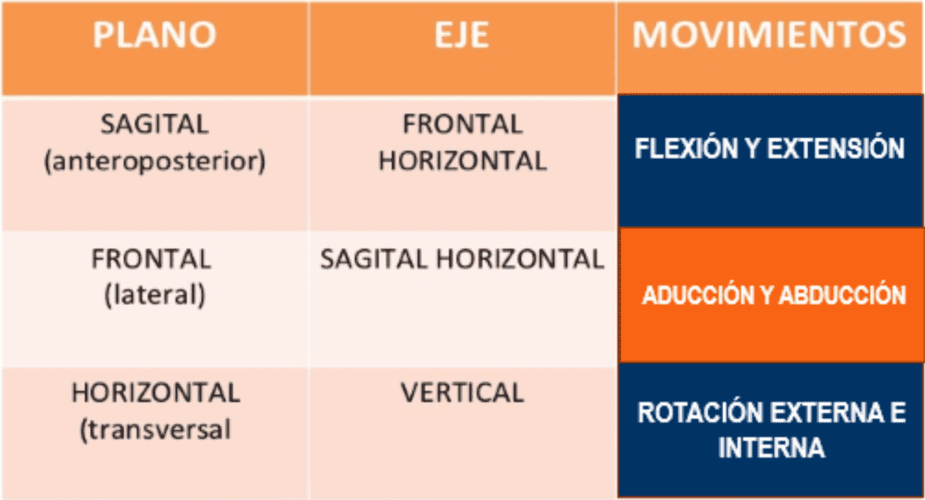
Pulling movement pattern for upper limbs
Once we conclude on the way we want to train, that is, full body, split routine, by muscle groups, etc., we can continue advancing on the more specific motor patterns, proposing and selecting exercises more in line with our goal.
When we talk about pulling exercises: in this classification, all exercises that will directly stimulate the back muscles will be included, that is, exercises of vertical pull or horizontal pull for upper limbs. For example, free weight rowing or pull-ups.
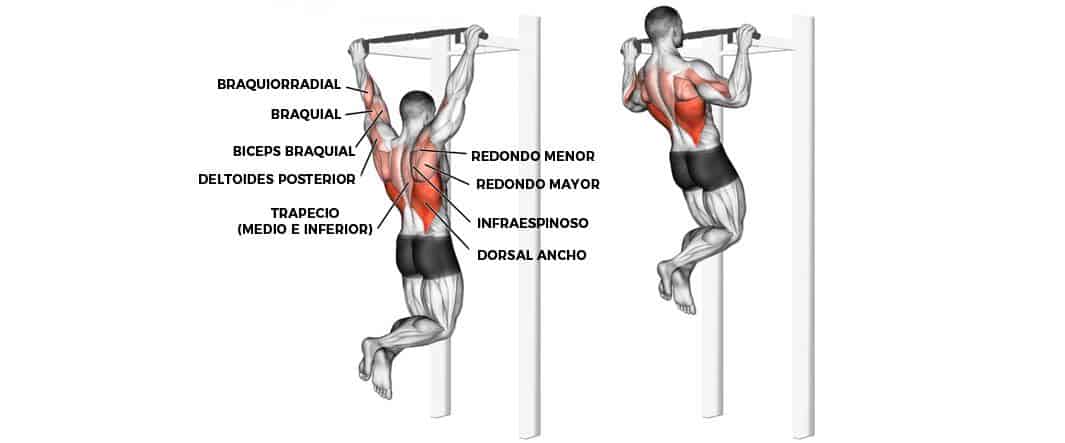
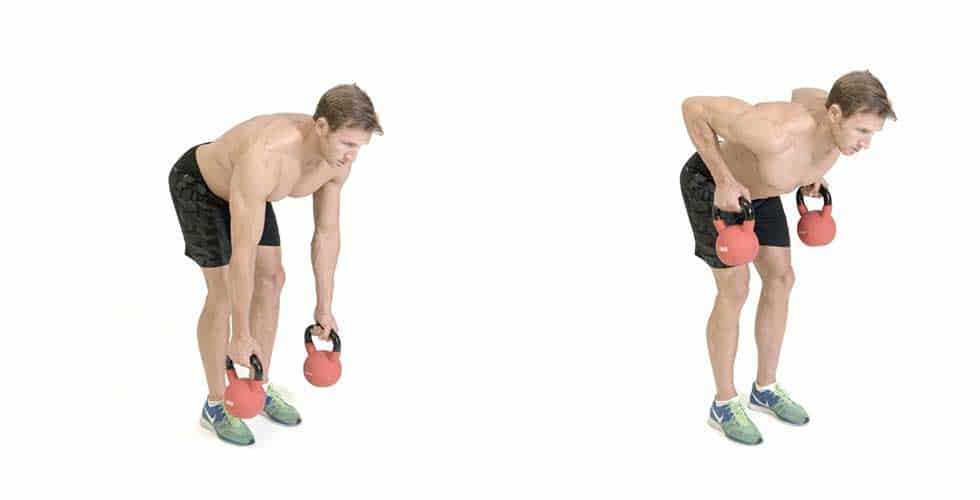
Pulling movements are characterized by moving external loads towards the body (axial axis), both vertically and horizontally.
While we can find an endless number of pulling exercises for upper limbs, we must establish an order based on goals and use some general classifications to explain the most important points and allow us to define the best 7 exercises to hypertrophy the back.
First, we will try to classify each exercise not only in vertical and horizontal pull but based on the degree of muscle involvement, stability, and plane of movement. This will obviously impact the technical complexity and the volume/intensity of the selected training. (4, 5)
Principle of individualization and training goals
As we always say the context of individualization and the prior goal will be the starting point when selecting the exercises correctly.
If we want to prioritize strength, then we must resort to multi-joint and/or complementary exercises with a high muscular and energy demand, such as the Pendlay row, barbell row, deadlift, pull-ups, and unilateral exercises with free weights.
On the other hand, if the main goal is oriented towards gaining muscle mass, then we must think about the volume of sets applied to the correct musculature, favoring stability and the simplicity of the exercise. (6, 7)
Since pulling movements are obviously oriented to strengthen the back or dorsal muscles, involving large muscles such as the latissimus dorsi or the trapezius in its three portions.
When dividing the pull work in hypertrophy, it is important to establish a division of stimuli classifying them by the back sector you want to focus on, for example, upper back, dorsal, and lower back.
Back musculature
Let’s continue in the process of selecting the 7 exercises to hypertrophy the back. The muscles of the back benefit from being able to train in the three planes of movement. But especially, the frontal and sagittal planes should be exploited to optimize muscle development.
The latissimus dorsi is maximally stimulated through shoulder abduction in the frontal plane in pull-up and lat pulldown exercises, mainly using a pronated grip, as this would remove the anterior arm musculature from the equation.
The type and width of grips in pulling movements show few differences in muscle activation, but if the position is varied from biacromial width to double separation, it can help increase the stimulus in the middle back area.
A neutral grip slightly decreases the activation of the biceps brachii, which allows more work to fall on the back musculature.
On the other hand, the muscles of the central part of the back (the middle portion of the trapezius and the rhomboids) are best worked using exercises in a sagittal plane (for example, standing or seated row, seal row, Helms row, etc). (8)
Regarding the position of the scapulae, although it may seem strange, there does not seem to be any added benefit on muscle stimulus by activating scapular retraction during the rowing movement.
Therefore, we recommend in most horizontal pull exercises (in vertical pull exercises it would not make sense) to release the scapulae in the shoulder flexion phase, that is, when the latissimus dorsi is in its maximum stretching phase, this will allow working at a greater range of motion and better hypertrophy the back.
Selection of the 7 exercises to hypertrophy the back
There is a wide variety of rows and variants probably the most well-known are the Pendlay row (heavier row), classic barbell row (more stability demands), “T” bar row which offers a great stimulus to the middle/upper trapezius musculature, and the unilateral row which both with dumbbell and pulley offers a great stimulus for the shoulder extensor musculature (latissimus dorsi).
In these exercises, heavy loads can be moved, but focusing on scapular retraction and depression with torque is fundamental.
It is important to never abandon the technique to lift a few more kilos, as this alters your goal and stimulus, increases the risk of injury, and causes attachment to certain load values that may not be correct.
On the other hand, recognizing the importance of training programming and counting the weekly volume of sets will also help, as it is not just about doing exercises but dosing them.
The heaviest row, the Pendlay row
The horizontal pull exercise where we can load the most weight and thus hypertrophy the back. The main details to consider when performing this exercise are that the lower limbs must perform a pushing action maintaining a solid support.
It is important to perform an intra-abdominal bracing action or correct IAP that keeps the core solid while benefiting the transfer of forces to the lower and upper limbs.
The upper limbs, on the other hand, are responsible for performing the pull, they must guide the bar towards the lower part of the chest or lower part of the sternum, for this, it is important to perform a slight hip tilt or extension that allows further activation of the latissimus dorsi along the bar path.
The demand of this multi-joint exercise is very high and it should be performed without too much accumulated fatigue among the first of the session. We recommend due to the degree of fatigue to perform this exercise in a range of 5 to 12 repetitions with recovery ranging from 1 to 3 minutes.
The importance of unilateral rows. Meadows row
The Meadows row or with Landmine, is a unilateral row for the upper back musculature that also emphasizes central stability work (anti-rotation).
When pulling, it is important not to compensate the movement.
It is very important not to flex-extend the trunk when performing the pull, this action should not be confused with the need to elevate or expand the chest and retract the scapulae (greater scapular adduction on one side).
We recommend adjusting the load of this exercise in a range of approximately 8 to 15 repetitions per side, with a recovery of 1 minute being more than enough to start the next set.
A simple row with great motor control. Inverted row
The inverted row and Australian pull-ups are exercises that are characterized by motor control, as we are in a plank or block position using mainly body weight as an external load.
It is important to descend slowly and feel the correct activation of the lats, a way to control the load and thus accentuate the eccentric phase of the movement.
Key points in this exercise: Scapular retraction, joint torque, maintaining neutrality. Working in a range of 12 to 15 repetitions if the exercise is mastered correctly would be ideal, recovering between sets from 1 to 3 minutes.
Other rows of great relevance
As we mentioned earlier, there are many interesting rows, the most important thing is to select those that provide greater adherence and respect the prior goals of the session, whether it be strength, hypertrophy, speed, power, etc.
Other exercises that we find very interesting are: barbell row, the Gironda row, Seal Row, and the Helms Row. Without a doubt, varying the planes and using many variants without overdoing it will be another key to hypertrophy the back.
We could spend hours talking and detailing exercises, but I think you can search for them on your own and select the best ones based on the principles we are outlining, let’s continue with another classification of exercises.
Lat pulldowns and their influence on hypertrophying the back
Vertical lat pulldowns are movements that emphasize the dorsal musculature par excellence, as the stimulus to this musculature is greatly favored by the range of motion and the stability these exercises offer along with a great shoulder extension.
In case you want to prioritize the stimulus, undoubtedly unilateral exercises on the pulley are the most interesting, as they offer greater stability and control over the application of forces.
On the other hand, it is important to accentuate the control of the eccentric phase in this type of movement, as logically its purpose is towards muscle mass gain and the TUT (time under tension) and metabolic stress of these fibers becomes a key point.
It is very important to select the correct lat pulldowns or exercises, many exercises like behind-the-neck pulldowns would not be effective.
All lat pulldown variants will be the finishing exercises par excellence to hypertrophy the back, using a range of 12 to 18 repetitions close to muscle failure, along with recoveries of 1 to 2 minutes can be a great strategy. (9)
Pull-ups and pull-ups, guaranteed big back
Pull-ups are a very used exercise, as we can do them anywhere. This vertical pulling movement pattern is in high demand for our lats, traps, rhomboids, among others.
While for many it seems like a simple exercise, errors in this exercise are very frequent and often end up increasing when planning a large number of repetitions.
First, it is necessary to ensure a correct scapular retraction and maintain the shoulders in retroversion during its execution.
Otherwise, we will end up overloading our shoulders and elbows without achieving efficient work for our back musculature.
A common mistake is to think only about passing the chin and going up as vertically as possible, which makes it difficult to activate the back musculature.
A correct way to do it would be trying to bring the bar to the chest, generating a slight backward tilt. You should try to bend the bar inward (torque), passing the thumbs correctly and increasing the torque of the forearms simulating a supination that accompanies the scapular retraction.
Regarding the type of pull-up, both supine and prone pull-ups have similar characteristics, although in supine pull-ups there is greater recruitment of the biceps brachii, it is important to understand that the bar descends towards the chest, and it is essential to reach the intersection with the bar with the “inflated chest” and a great activation of the central musculature.
Many people decide not to do pull-ups or pull-ups, due to the mechanical difficulty of having to do it with their own weight. Despite this, there are multiple strategies to facilitate this movement.
Ways to maximize your pull-up and hypertrophy the back
One of the most interesting exercises seems to be the Rack Chins, if the pull-up is very difficult for you, this is a variant that reduces your resistance arm (feet are supported on a box), less force will need to be applied and this will facilitate the final load to be moved vertically.
A way to start thinking about your pull-up can be performing jumps, then descending slowly and taking advantage of the eccentric phase, one of the most important phases of the movement.
Another way can be using assistance bands or a box that helps in the moments with the greatest need for strength and motor control.
Finally, since lat pulldowns are a vertical pulling exercise, they can also help you gain strength. Include them and perform a weekly volume of at least 12 sets of this movement pattern distributed over a weekly frequency of 2 days and you will gain a significant advantage when hypertrophying the back.
Single-joint and finishing exercises to hypertrophy the back
Single-joint exercises undoubtedly offer greater stability and emphasis on muscle building.
Single-joint exercises in the sagittal plane of the shoulder, such as the pullover, are often recommended to maximize the development of the latissimus dorsi and hypertrophy the back.
Despite this, there is evidence that muscle activation in this exercise significantly favors the pectoralis major more than the lats, and the level of activation depends on the level of force produced by the arms.
However, the pullover exerts a great stretch of the latissimus dorsi in the starting position, which makes it an interesting exercise for growth through the pathway of increased muscle damage by accentuating the eccentric phase.
Therefore, focusing the effort on its starting phase, the pullover can be useful in a training session aimed at hypertrophying the back. (10)
An important recommendation is to work close to muscle failure or at least leave a few repetitions in reserve to not generate too much fatigue and maximize each exercise. (11, 12)
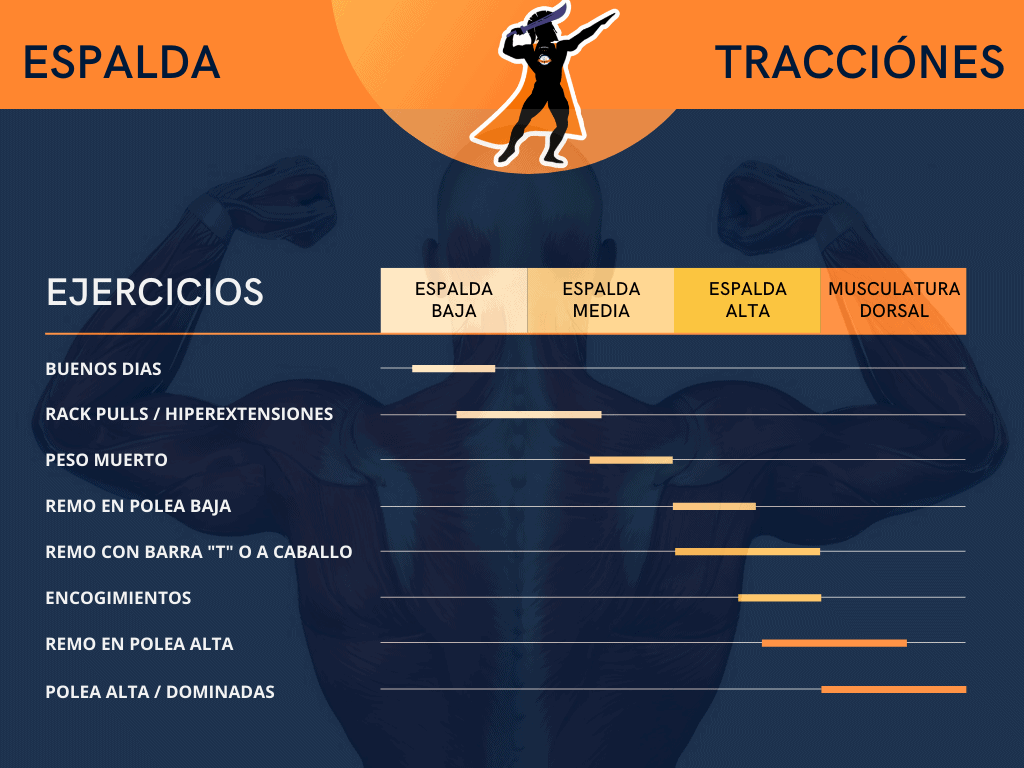
Conclusions on 7 exercises to hypertrophy the back
As you can see, it would be almost impossible to select only 7 exercises to hypertrophy the back, there are many and their correct selection will depend on the context of application and functionality.
Depending on your goal when working the back or dorsal musculature, you will select more multi-joint, complementary, or single-joint pulling exercises.
If your goal is to hypertrophy the back or simply gain more strength, you will undoubtedly have to orient your training using the following variables:
- Laterality: if the exercise is symmetrical or asymmetrical, it can be unilateral or bilateral asymmetrical. For example, a dumbbell bent-over row.
- Base of support and support: if the exercise is bipodal, unipodal, or in quadruped. E.g., Pendlay row or renegade row.
- Type of stability: if the exercise presents external forces of anti-flexion, anti-extension, or anti-rotation.
- Motor control: if the exercise requires great demands of body awareness, increasing activation or accentuating a phase of movement depending on our specific needs and goals. For example, accentuating the eccentric phase of a movement.
- Agility: depending on whether the movement is explosive or not, we can accentuate more the work of one joint over another.
Podcast “7 exercises to hypertrophy the back”: Play in new window |
Subscribe to Apple Podcasts | Spotify | Google Podcasts |
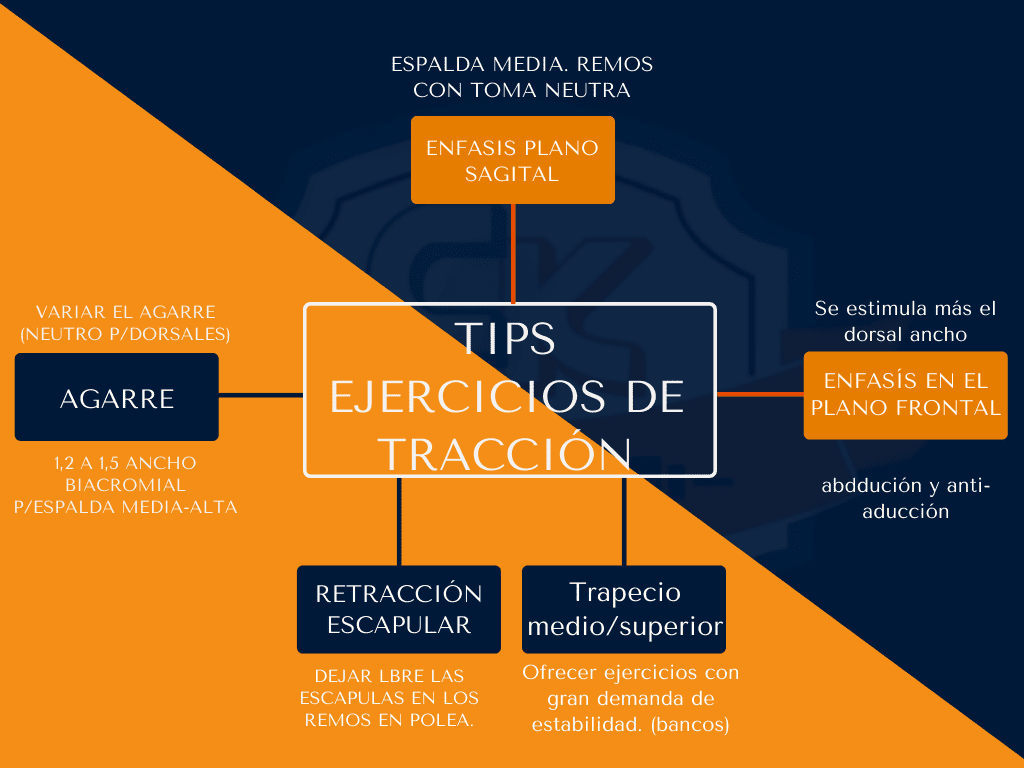
Bibliographic references
- Boyle M. (2012). Advances in Functional Training: Training Techniques for Coaches, Personal Trainers and Athletes.
- Cook G., Burton W., Kiesel K., Rose G., Bryant M.F.(2012). Movement: Functional Movement Systems – Screening, Assessing, Corrective Strategies On Target Publications. The Journal of the Canadian Chiropractic Association. (link)
- Janda, V., & Jull, G. (1996). Muscles and motor control in low back pain. Barcelona: Paidotribo. (link)
- Kendall, F. P., et al (2007). Kendall’s Muscles Testing and Function with Posture and Pain. Madrid: Marban Libros.
- Borghuis, J., et al (2008). The Importance of Sensory-Motor Control in Providing Core Stability. Implications for Measurement and Training. Sports Medicine, Auckland, N. Z. 38(11), 893-916.
- Willardson, J. M., et al (2007). Core stability training: applications to sports conditioning programs. Journal of Strength and Conditioning Research, 21, 979-985.(link)
- Cholewicki, J., et al(2000). Effects of external trunk loads on lumbar spine stability. Journal of Biomechanics. 33(11), 1377-1385.
- Kapandji, I.A. (2006). Physiology of the Joints. Volume 1. Madrid: Panamericana. 6th Edition.
- Baz-Valle, E., et al (2019). The effects of exercise variation in muscle thickness, maximal strength and motivation in resistance trained men. Plos One. 14 (12), 1371.
- Frederic Delavier.(2012) Guide to Muscular Movements. Paidotribo; Edition: 6.
- Helms, E. R., Cronin, J., Storey, A. and Zourdos, M. C. (2016). Application of the repetitions in reserve-based rating of perceived exertion scale for resistance training. Strength and Conditioning Journal, 38 (4), 42–49.
- Zourdos, M. C., Klemp, A., Dolan, C., et al. (2016). Novel Resistance Training-Specific Rating of Perceived Exertion Scale Measuring Repetitions in Reserve. Journal of Strength and Conditioning Research. 30(1):267-275. (link)

